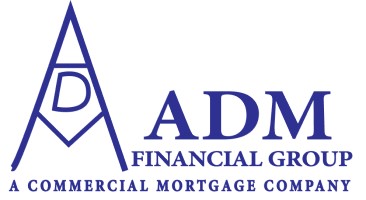 We Have The Answers
We Have The Answers
What types of Property are eligible?
Income Producing Real Estate
What types of property are ineligible?
Single family residential (not multi-family).
What is ADM Financial Group’s origination territory?
Nationwide
What is the most I can borrow on my property?
A number of factors influence this. We have lenders offering very competitive rates for loans with up to a 85% loan-to-value. For example, a single tenant property with non-investment grade credit, that has strong earnings and net worth on a long term lease may be able to obtain 90% financing that includes typical non-recourse terms. This loan would have a 10 year fixed rate available, 25 year amortization, priced at 1.60% to 1.75% over the 10-year Treasury Note Yield.
Loan size affects the amount available for a particular loan. Larger loan amounts, (over $5 million), have more options in terms of loan limits.
Most loan requests will have options available between 75% to 80% loan-to-value.
Is there a minimum or maximum loan amount?
Loan products available start at $250,0000. The largest loan that ADM Financial Group does is $10,000,000.00.
How is the loan amount determined?
The maximum loan amount available is determined primarily by property type, property value and cash flow of the property. Two very important ratios in determining value and cash flow are the Loan-to-Value Ratio and Debt Service Coverage Ratio.
The Loan-to-Value (LTV) Ratio is computed by dividing the loan amount by the property value as determined by the outside appraisal. Acceptable Loan-to-Value amounts can range from 50% to nearly 100% depending upon the property type and loan product. Most properties will have financing available in the 75% to 80% LTV range.
Loan Amount/Appraised Value = LTV
Another important determinant of the loan amount is the Debt Service Coverage Ratio (DSCR). Lenders will look to the operating performance of the property to establish that the cash flow is adequate to service the debt and provide a margin of comfort for changes in operating status such as increased expenses or vacancies. This margin is referred to as the Debt Service Coverage Ratio.
The requirements for financial performance vary among loan programs and by property type. Generally, the range of required DSCR is 1.20 to 1.30. This ratio is calculated based upon a detailed analysis of the current year-to-date and the most recent two year-end Profit and Loss Statements for the property, and analysis of the current Rent Roll and Leases. The definitive DSCR is finalized by the property appraisal. The ratio is calculated by dividing the underwritten cash flow available for debt service by the annual mortgage payment amount.
Annual Cash Flow from Property/Annual Debt Service = DSCR
What are the closing costs?
Because we represent a large number of lenders and loan products the closing costs can vary widely. All loan proposals presented to you will include the estimated closing costs. This way, you will be able to make an informed decision.
Will my loan have prepayment penalties?
Many of our institutional loans come with prepayment penalties. Some of the lowest interest rates will carry the most stringent prepayment penalties. The vast majority of the loans available through ADM Financial Group that include prepayment penalties are also fully assumable. We will discuss your plans and objectives early in the loan underwriting process to match the loan terms with your objectives.
How long will it take to close my loan?
Generally loans close between 60 to 90 days from the date you submit all required documents. It is possible to close in less than 60 days on certain loans such as accounts receivable and factoring . You should discuss your specific timing needs with your loan officer during initial loan discussions.
What does a “non-recourse loan” mean?
Many of our institutional lenders offer loans on a non-recourse basis. That is, the lender takes the market risks. If the property fails to provide adequate income to support the operating costs and debt service, the borrower could opt to not invest additional dollars in the project and turn the property back to the lender. If the lender sells the property for less than what is owed, the lender will not come back to the borrowing entity or principals personally requesting the difference between the final disposition price and the loan balance.
The borrowing entity and principals normally will be required to execute a guaranty addressing areas such as; fraud, waste, misappropriation of proceeds, environmental liability and bankruptcy. These are the traditional “carve-outs” of non-recourse financing.
